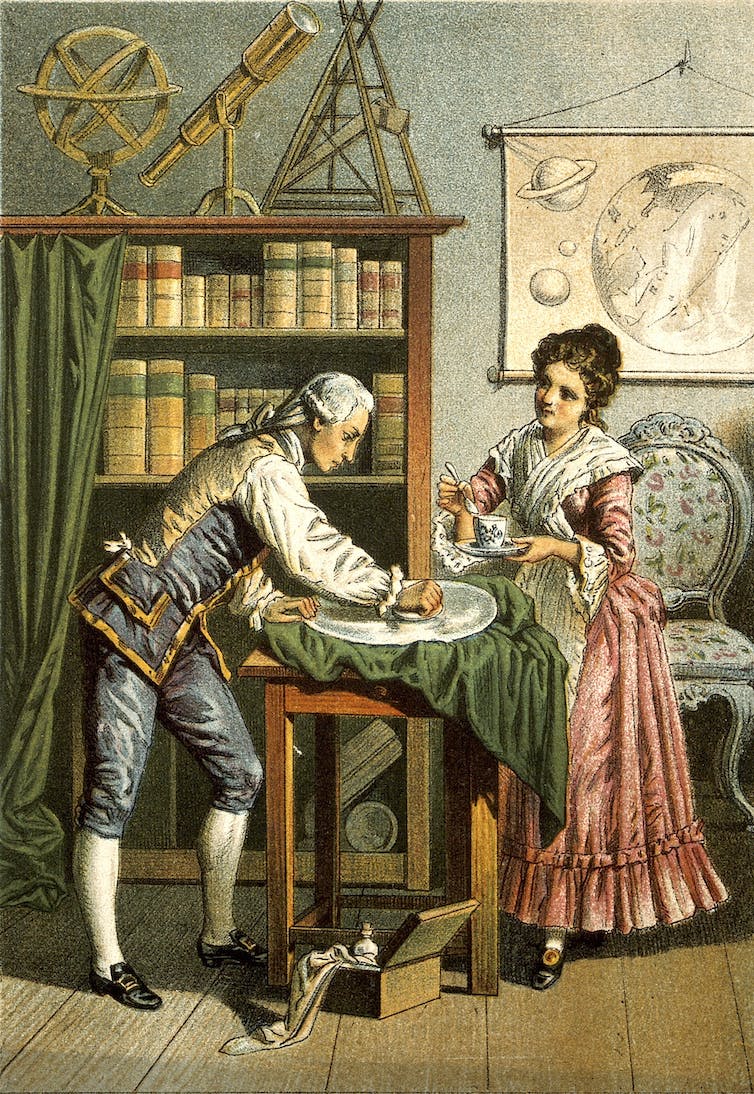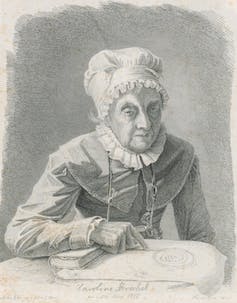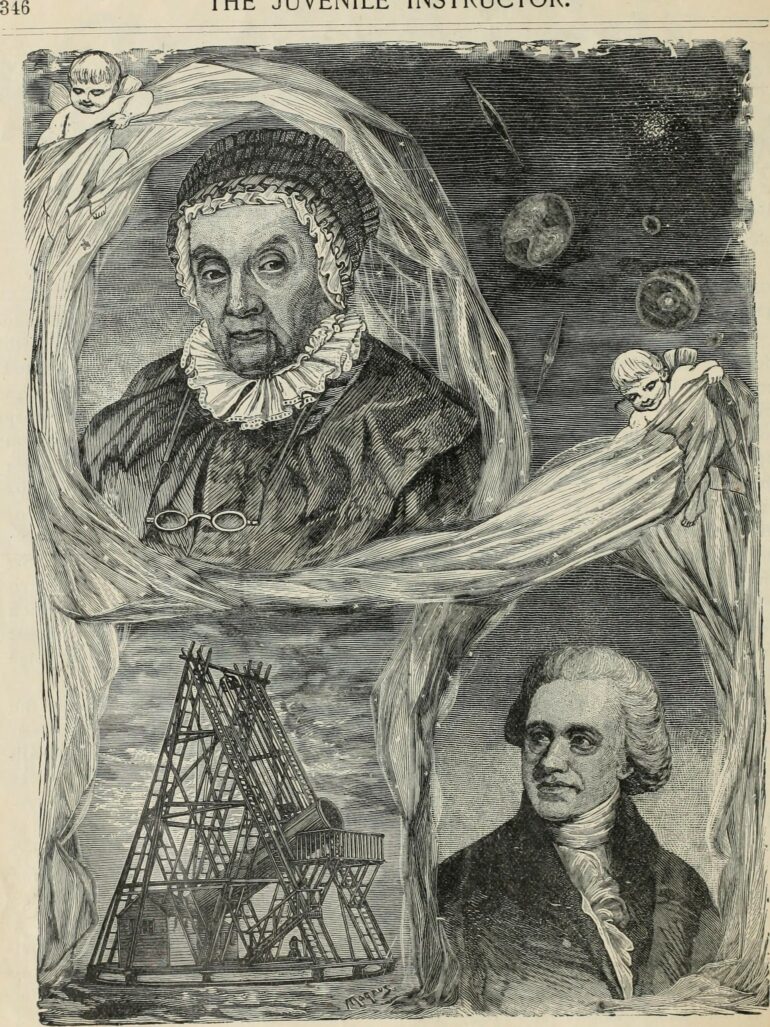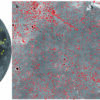Caroline Herschel, the first professional female astronomer, made contributions to astronomy that are still important to the field today. But even many astronomers may not recognize her name.
Most scientists care about the newest techniques, data and theories in their field, but they often know very little about the history of their discipline. Astronomers, like me, are no exception.
It wasn’t until I taught an intro to astronomy class that I learned about Caroline. Now, thanks to a new display of her papers at the Herschel Museum in Bath, England, others will get to learn about her too. Her story reflects not only the priorities of astronomy but also how credit is assigned in the field.
Her path to astronomy
Caroline Herschel, born in 1750, did not have an easy childhood. After a bout with typhus left her scarred at a young age, her family assumed that she would never marry and treated her as an unpaid servant. She was forced to complete household chores, despite showing a keen interest in learning from a young age. She eventually escaped her family to follow her older brother William Herschel, whom she adored, to Bath.

Caroline Herschel worked with her brother William on many pursuits.
A. Diethe/Wellcome Images via Wikimedia Commons, CC BY-SA
Caroline was a somewhat unwilling astronomer at first. She didn’t become interested in astronomy until William was already thoroughly engrossed in the subject. Although she spoke somewhat disparagingly about how she followed her brother to different interests, including music and astronomy, Caroline eventually acknowledged her real interest in studying astronomical bodies.
Astronomers at the time were mainly interested in finding new objects and mapping out the heavens with precision. Using telescopes to look for new comets and nebulae was also popular. William Herschel became famous after his discovery of Uranus in 1781, though he mistook the planet for a comet at first.
At the beginning of her career, Caroline worked as William’s assistant. She focused mostly on astronomical instrumentation tasks, like polishing telescope mirrors. She also helped copy catalogs and took careful notes about William’s observations. But then she began to make her own observations.
Searching the skies
In 1782, Caroline began recording the positions of new objects in her own logbook. It was through this work that she discovered several comets and nebulae. On Aug. 1, 1782, she discovered a comet – meaning she was the first to see it in a telescope with her own eyes. This was the first comet discovery attributed to a woman. She went on to discover seven more comets over the next 11 years.

Caroline Herschel (1750−1848) was the first woman to receive a salary as a scientist.
ETH Library via Wikimedia Commons
At the time of the Herschels’ work, it was the actual observation of an object that warranted public recognition,…



